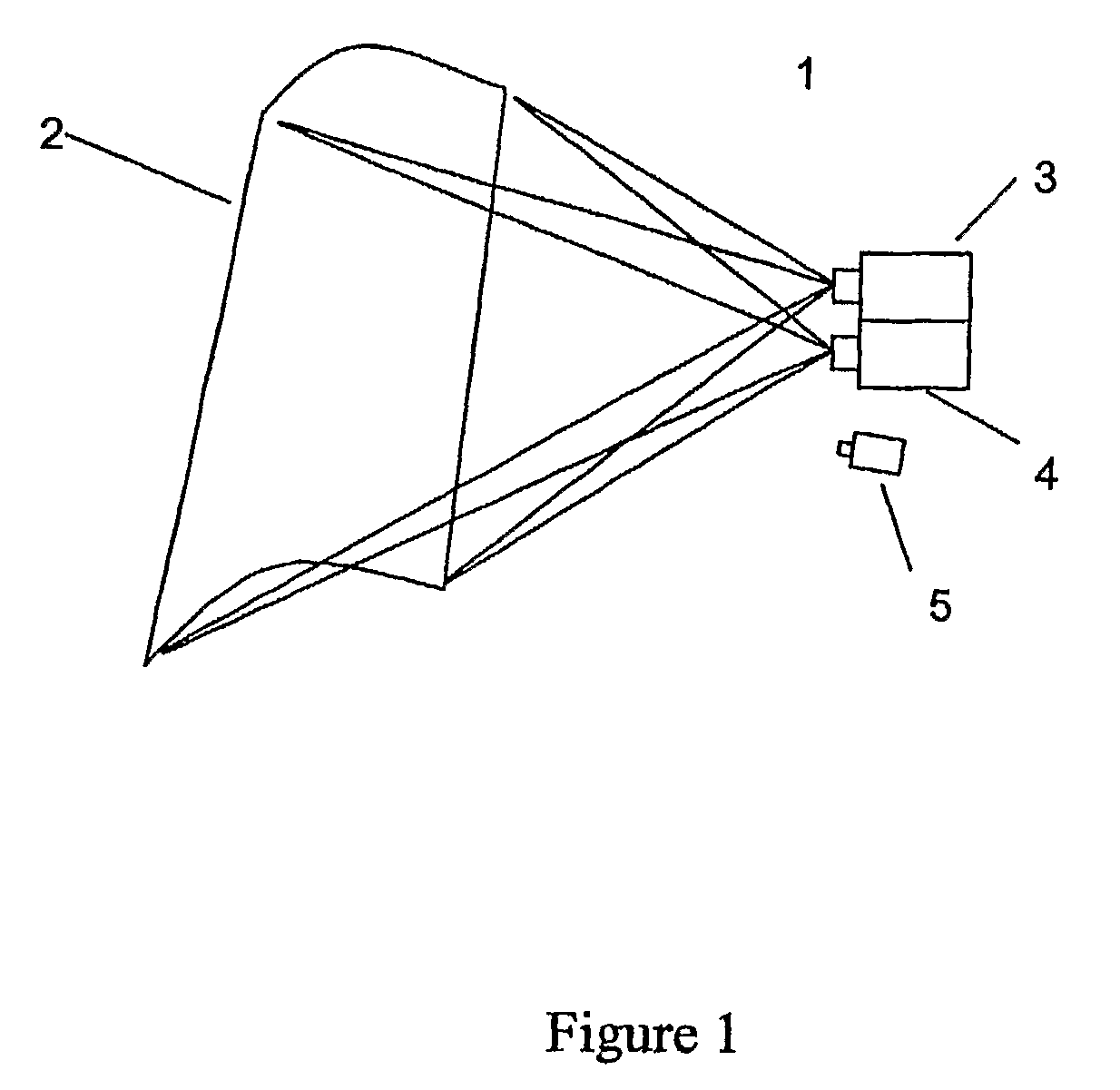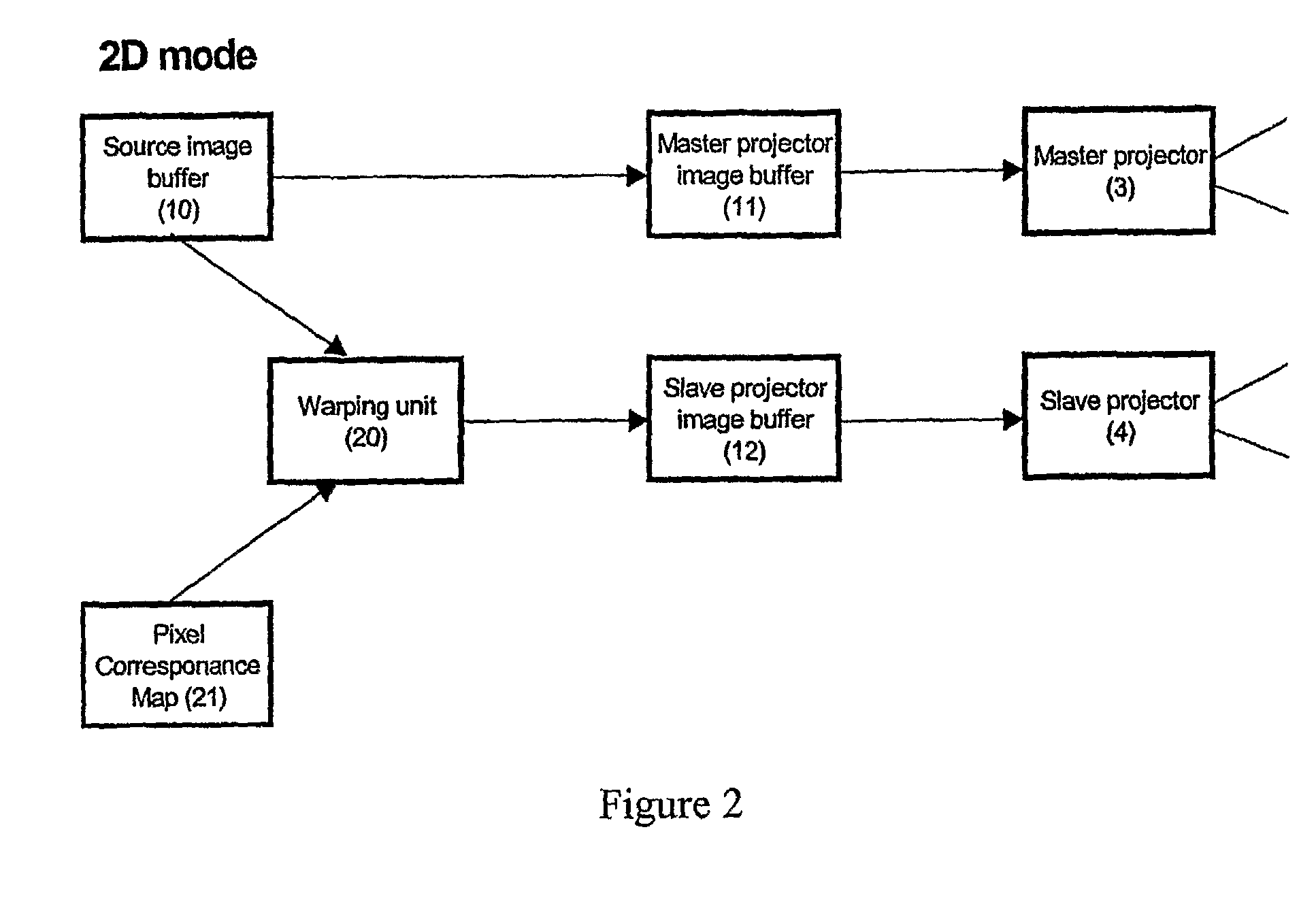Systems and methods for projecting composite images
a composite image and image technology, applied in the field of projection displays, can solve the problems of limited resolution and light output required for large immersive screens, expensive eye shutter glasses, and the above-mentioned patents do not address the unique requirements of projecting 3d stereoscopic motion picture images, and achieve the effect of accurate overall color channel registration and high precision optics
- Summary
- Abstract
- Description
- Claims
- Application Information
AI Technical Summary
Benefits of technology
Problems solved by technology
Method used
Image
Examples
Embodiment Construction
[0068]Referring to FIG. 1, a convertible projection system (1) is shown composed of two separate electronic motion picture projectors (3, 4). Other embodiments of the projection system may contain more than two electronic motion picture projectors. The projectors are not limited to a particular electronic technology and may in fact be based on DMD (deformable mirror device) technology, LC (liquid crystal) reflective or LC transmissive technology, or any other existing or emerging electronic projection technology. In FIG. 1 the two projectors (3,4) are shown in their preferred embodiment of one placed above the other; however they may also be arranged in other positions relative to one another. The two projectors, regardless of their physical arrangement, project their images onto a projection screen (2) so that they are substantially superimposed or overlapped.
[0069]In other embodiments, more than two projectors may be used. For example, more than two projectors superimposed to proj...
PUM
 Login to View More
Login to View More Abstract
Description
Claims
Application Information
 Login to View More
Login to View More - R&D
- Intellectual Property
- Life Sciences
- Materials
- Tech Scout
- Unparalleled Data Quality
- Higher Quality Content
- 60% Fewer Hallucinations
Browse by: Latest US Patents, China's latest patents, Technical Efficacy Thesaurus, Application Domain, Technology Topic, Popular Technical Reports.
© 2025 PatSnap. All rights reserved.Legal|Privacy policy|Modern Slavery Act Transparency Statement|Sitemap|About US| Contact US: help@patsnap.com



